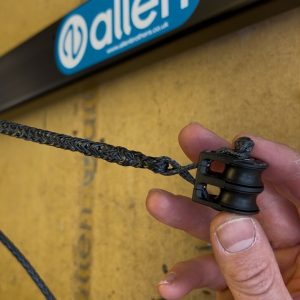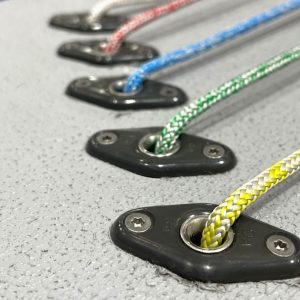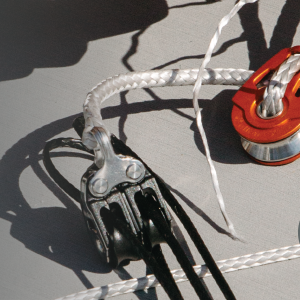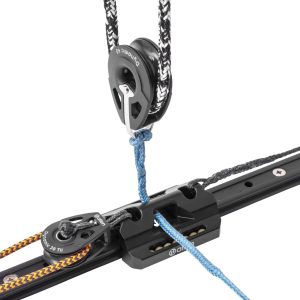Sail Slides & Slugs – How to choose correctly.
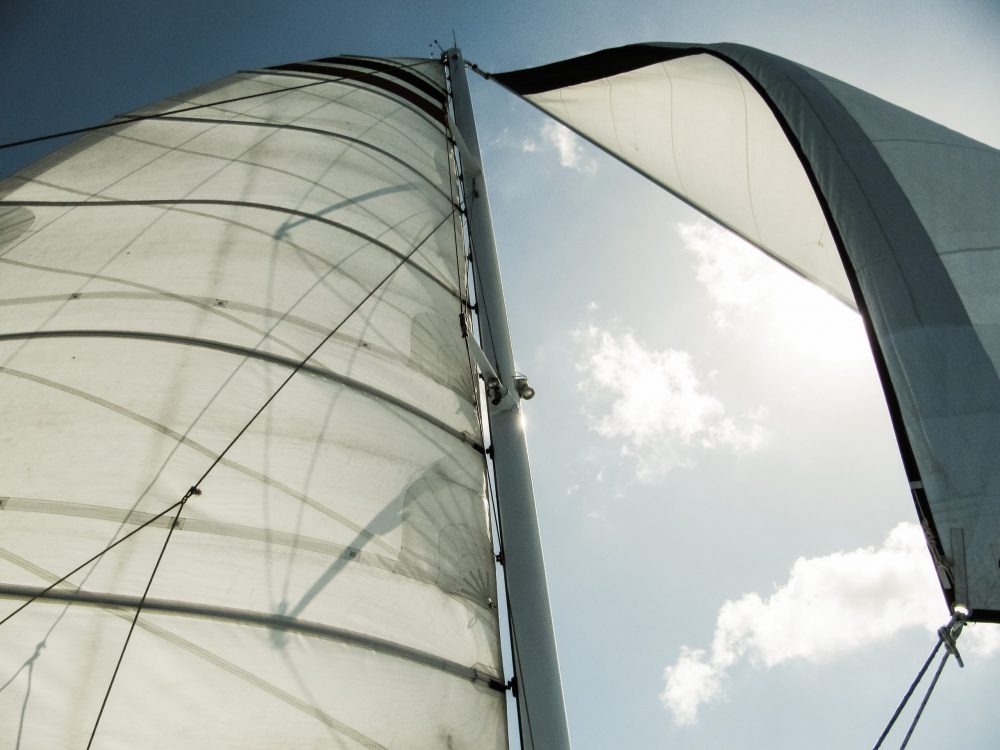
This post was updated on 29/05/24
Sail slides and slugs might not be the flashiest part of a sailboat, but they are essential for smooth sailing.
These components attach the sail to the mast or boom, making hoisting, lowering, and reefing sails more efficient and less strenuous. Here’s a comprehensive guide on why they are used, the variety available, and their benefits.
Jump to
What is the difference between a sail slide and a slug?
Installation of sail slides and slugs.
Why use a sail slide or slug?
Sail slides and slugs provide several advantages over traditional bolt ropes:
Reduced Friction: Slides and slugs reduce friction between the sail and the mast, making it easier to hoist and lower sails.
Ease of Use: With a track stop installed the sail remains attached to the mast. This allows single-handed operation and prevents the sail from being blown away when hoisting or lowering the sail. Using Slides also allows the sail to stack easily when dropped.
What is the difference between a sail slide and a slug?
Choosing between slides and slugs depends on your mast track and sail requirements:
Slug: Sail slugs feature a round or semicircle shape that is inserted into the track. This design allows for more articulation.
-
 “C” Sail Slug£2.20
“C” Sail Slug£2.20 -
 “T” Sail Slug – Large£2.12
“T” Sail Slug – Large£2.12 -
 Sail Slug – Small£0.62
Sail Slug – Small£0.62
Internal Slide: Internal slides are typically “T” shaped and are inserted inside the track, handling higher loads and offering versatility.
External Slide: A wrap-around design suitable for mounting on the outside of a track which is more commonly seen on older wooden masts.
Which should you use?
Choosing the right sail slides or slugs depends on your mast track. If your boat already uses slides or slugs, measure your existing hardware and compare it to available options.
When selecting new slides or slugs, ensure they have a bit of wiggle room to prevent sticking or excessive friction in the mast track. However, avoid too much space, which could cause the slide to escape.
Measure the mast track with a ruler or calliper to determine the track opening width and the internal space.
Installation of sail slides and slugs.
Once you have chosen the slide or slug and have checked it against your mast track to see if it fits correctly, you will then need to consider how to attach it to the sail.
Sail Shackle: The nylon sail shackle is the cheapest and easiest option for attaching the slide to the sail. Sail shackles are available in a variety of sizes, so it’s important to check they will fit around both the slide and the eyelet in the sail. They are offered with either a screw-together or snap-on attachment.
-
 Slide Hank With Screws£2.00
Slide Hank With Screws£2.00 -
 Nylon Sail Shackle£0.88
Nylon Sail Shackle£0.88 -
 Nylon Sail Shackle£0.88
Nylon Sail Shackle£0.88
Metal Shackle: The strongest option which also has the most choice. However, a metal shackle can bash against the mast when a sail is flogging, which can damage the mast.
Webbing: This is the recommended option from sailmakers as it gives the nicest finish and proves the most forgiving for the sail. This choice is the most labour-intensive and will require a sailmaker or experienced seamstress to install the slide or slug.
Should you require any further details on any of the pieces of hardware mentioned above, then please look at the individual product pages where you can find a detailed product drawing, just click the PDF logo below the main product image. The Allen sales team is also happy to help and answer any further questions.
MORE NEWS
